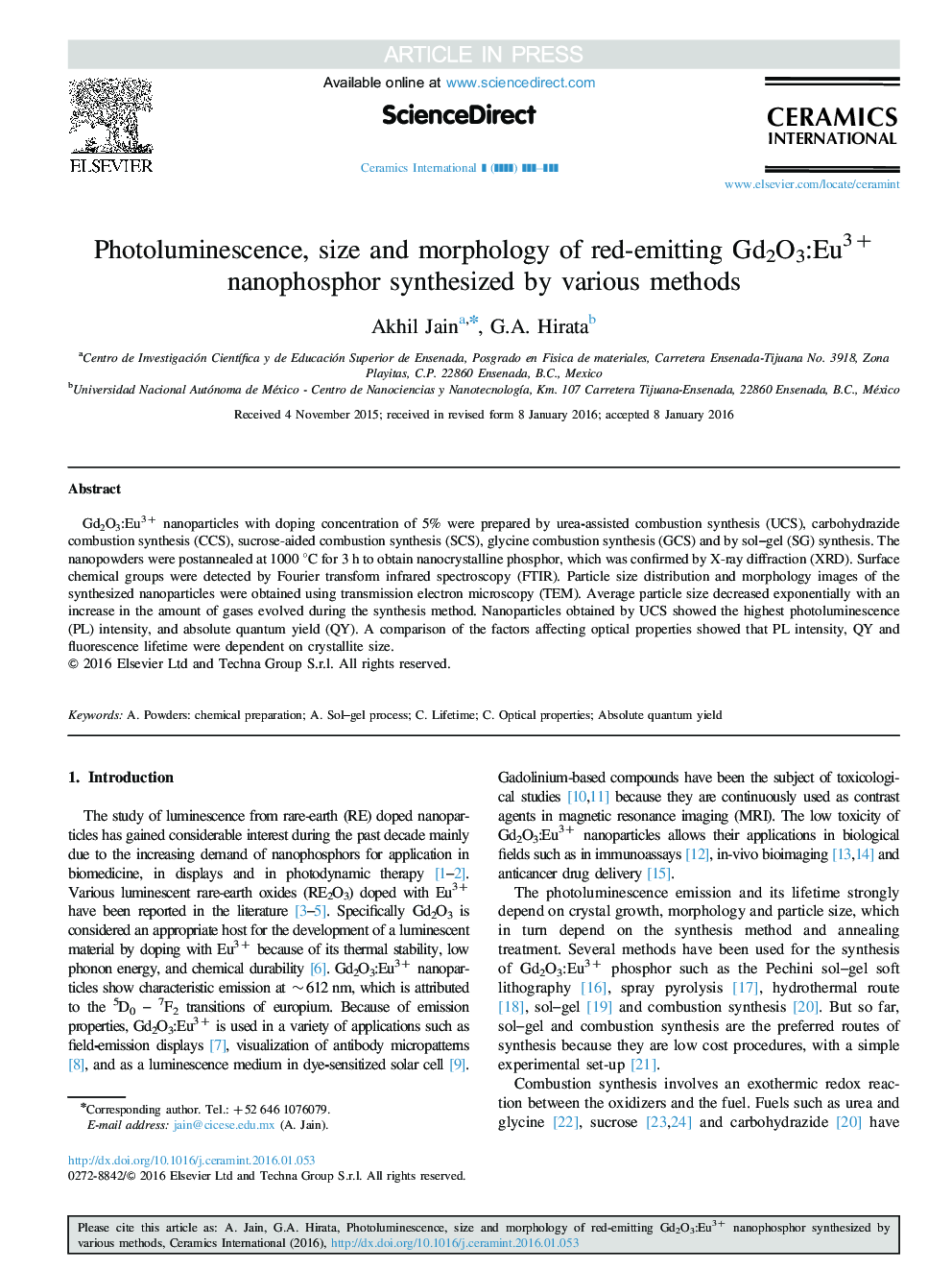| Article ID | Journal | Published Year | Pages | File Type |
|---|---|---|---|---|
| 10624021 | Ceramics International | 2016 | 8 Pages |
Abstract
Gd2O3:Eu3+ nanoparticles with doping concentration of 5% were prepared by urea-assisted combustion synthesis (UCS), carbohydrazide combustion synthesis (CCS), sucrose-aided combustion synthesis (SCS), glycine combustion synthesis (GCS) and by sol-gel (SG) synthesis. The nanopowders were postannealed at 1000 °C for 3 h to obtain nanocrystalline phosphor, which was confirmed by X-ray diffraction (XRD). Surface chemical groups were detected by Fourier transform infrared spectroscopy (FTIR). Particle size distribution and morphology images of the synthesized nanoparticles were obtained using transmission electron microscopy (TEM). Average particle size decreased exponentially with an increase in the amount of gases evolved during the synthesis method. Nanoparticles obtained by UCS showed the highest photoluminescence (PL) intensity, and absolute quantum yield (QY). A comparison of the factors affecting optical properties showed that PL intensity, QY and fluorescence lifetime were dependent on crystallite size.
Related Topics
Physical Sciences and Engineering
Materials Science
Ceramics and Composites
Authors
Akhil Jain, G.A. Hirata,
